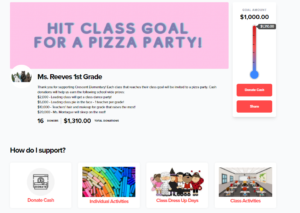Should the arts be left out of fundraising efforts? Absolutely not. Flex Fundraising is proud to be tied to many competitive sports, and we’re proud to sponsor the arts as well. When it comes to dancing, it’s an art and a sport!
Let’s take a look into Jazz’n Place Dance Studio in Lehi, Utah. Jazz’n Place teaches and directs all sorts of different dance styles, from jazz, hip-hop, contemporary, lyrical, tumbling, and technique classes. Much like sports, dance requires an incredible amount of practice, dedication, and a competitive spirit to improve and perform better. Instead of having a game to go to every Saturday at 10:00am, dance depends on local and national competitions for dancers to perform and compete in. These programs take time to plan, lots of hands to execute, and money from each participating group to be allowed to perform.
As we all know, money isn’t something that just falls out of the sky.
Jazz’n Place Dance Studio and Flex Fundraising
Jazz’n Place has been working their dancing legs off and has found a way to ultimately show off what their students can do: compete for a national title at the NRG Dance Project Convention and Competition in Anaheim, California. With many awesome students coming from different backgrounds, Flex Fundraising wants to ease the expenses that Jazz’n Place will have to spend in order to make their students’ dreams come true.
How is Flex Fundraising making a difference? We’re wanting to help Jazz’n Place raise as much money and more than ever before through our program. With the resources we process and the simplicity of fundraising through us, we’re doing the tough work for them while they are able to share and post about their fundraiser. It’s easy to do and it yields high results. Not to brag, but, it’s true.
From their donation page, “By donating to each dancer you will be helping to expand their dance education by providing them the opportunity to learn from some of the most sought-after choreographers in the industry, train with dancers across the country, all while encouraging them to give back with acts of kindness.”
We love reading being a part of these programs. We’re proud to sponsor fundraisers that will help anyone (especially kids) be able to experience life and be part of things that are bigger than themselves. Participating in such events as a child has massive health benefits, as well.
Why your kids should get into dancing
We truly believe that kids are incredible and that they should do everything they can to discover future talents and hobbies. Although we naturally write and produce much of our content about soccer, football, basketball and baseball, we love to be involved with all sports, clubs, teams, groups, and anyone in between who needs some help with fundraising. One things that keeps us up at night is the worry that kids won’t be able to experience something new due to a lack of funds for the programing. We have designed our entire model with that in mind, doing everything we can to help programs that normally aren’t able to receive the money they need to operate.
Why should your kids try dancing? From the Washington Parent, “From balancing on their toes to raising their arms, dance utilizes the entire body and all of its muscle groups. Dance improves flexibility, coordination, balance, range of motion, stamina, muscle tone, strength and posture. But physical fitness is just one of many benefits of dance that can enhance your child’s life in so many ways.
Dance helps children develop emotionally, socially and cognitively, and the dedication, discipline and focus children must learn and practice are important life skills that will transfer over to school, work and other aspects of their lives.
Committing to a dance class involves showing up on time, every time, fully prepared, with hair fixed and in proper clothing, and instills great habits and accountability. Children learn that their actions not only affect themselves, but others as well. The dedication involved in showing up for rehearsals also shows kids that being committed to something can bring many positives into their lives.”









